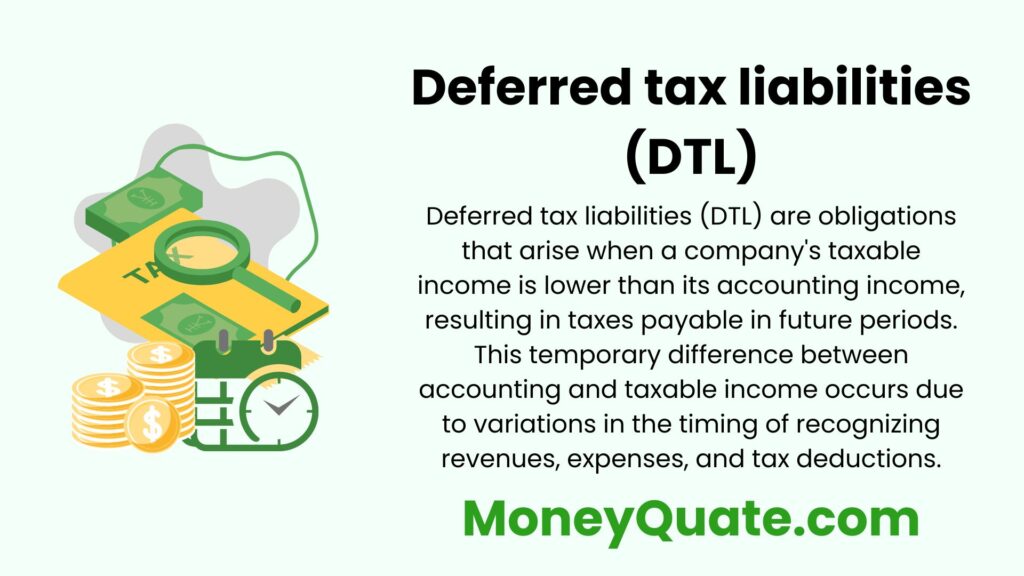Deferred tax liabilities represent the tax obligations that a company expects to pay in the future due to temporary differences between taxable income and accounting income. Here’s a detailed explanation:

Contents
Understanding Deferred Tax Liabilities
Temporary Differences:
Deferred tax liabilities arise from temporary differences between the carrying amount of assets and liabilities for financial reporting purposes and their tax bases for income tax purposes.
Taxable Temporary Differences:
These differences result in higher taxable income in future periods, leading to deferred tax liabilities. Examples include:
- Accelerated depreciation for tax purposes compared to straight-line depreciation for financial reporting.
- Recognition of revenue for tax purposes before it’s recognized for financial reporting.
Recognition Principle:
Deferred tax liabilities are recognized based on the recognition principle, which states that taxes should be accounted for in the same period as the corresponding revenue, expense, or transaction that gives rise to the temporary difference.
Balance Sheet Presentation:
They are reported on the balance sheet as non-current liabilities. They represent the estimated future tax payments that the company will need to make when the temporary differences reverse.
Measurement:
Deferred tax liabilities are measured using the enacted tax rates expected to apply to taxable income in the periods when the temporary differences reverse.
Changes in Tax Rates:
Changes in tax rates may impact the measurement of deferred tax liabilities. A decrease in tax rates would decrease the deferred tax liabilities, while an increase would increase them.
Reversal of Temporary Differences:
Deferred tax liabilities reverse when the temporary differences giving rise to them reverse. This typically occurs as the underlying assets or liabilities are amortized, depreciated, or settled.
Example of Deferred Tax Liabilities
Consider a company that uses accelerated depreciation for tax purposes and straight-line depreciation for financial reporting. The carrying amount of an asset is $100,000, and its tax basis is $80,000. The tax rate is 20%.
- In the first year, the company records depreciation expense of $20,000 for financial reporting and $25,000 for tax purposes.
- The temporary difference is $5,000 ($25,000 – $20,000).
- The deferred tax liability is $1,000 ($5,000 * 20%).
- The deferred tax liability is recorded on the balance sheet as a non-current liability.
Importance of Deferred Tax Liabilities
Accurate Financial Reporting:
Deferred tax liabilities ensure that taxes are recognized in the appropriate period, leading to accurate financial statements.
Future Tax Planning:
Companies can use information about deferred tax liabilities for tax planning purposes, such as managing the timing of deductible expenses to minimize future tax payments.
Investor Confidence:
Transparent disclosure of deferred tax liabilities provides investors with insights into a company’s future tax obligations, enhancing confidence in financial reporting.
Risk Management:
Understanding deferred tax liabilities helps companies manage tax-related risks and make informed decisions regarding investments, acquisitions, and business operations.
Conclusion
Deferred tax liabilities represent future tax obligations arising from temporary differences between taxable income and accounting income. Proper recognition and measurement of these liabilities are essential for accurate financial reporting and effective tax planning.